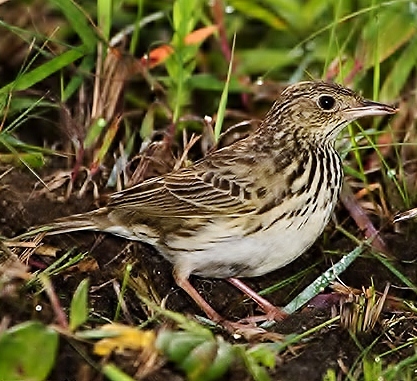 |
| Photo by Hugh Chittenden (Biodiversity Explorer) |
Common name:
short-tailed pipit (en); petinha-rabicurta (pt); pipit à queue courte (fr); bisbita colicorto (es); kurzschwanzpieper (de)
Taxonomy:
Order Passeriformes
Family Motacillidae
Range:
This African species is found from Gabon, through Congo, D.R. Congo and north-eastern Angola, and into Zambia. There are also separate populations in Tanzania, Uganda, Mozambique and South Africa.
Size:
These birds are 12 cm long and weigh around 16 g.
Habitat:
They are mostly found in short, wet grasslands, but also in dry grasslands, pastures and arable land. They occur from sea level up to an altitude of 1.800 m.
Diet:
Short-tailed pipits forage on the ground, eating seeds and both adult and larval insects.
Breeding:
In South Africa, these birds breed in October-February. The nest is an tidy cup made of dry grass and rootlets, placed on the ground next to flowering forbs, grass tufts or in tiny scrublets. The female lays 2-3 white eggs with brown and grey speckles, which are incubated for 13-14 days. The chicks fledge about 13 days after hatching.
Conservation:
IUCN status – LC (Least Concern)
The shirt-tailed pipit has a very large breeding range and is described as generally uncommon to frequent. The population is suspected to be stable in the absence of evidence for any declines or substantial threats.







